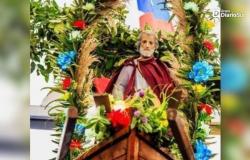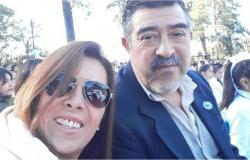Trinidad Buffo was distinguished for her work on the sugar crisis in Tucumán starting in the second half of the 1960s.
Trinidad Buffoa graduate in History and a scholarship recipient from the National Interuniversity Council, was distinguished for her thesis on the sugar crisis in Tucumán starting in the second half of the 1960s. Of the 42 academic works presented by professionals from public universities throughout the country and evaluated by recognized specialists from various areas of knowledge, Buffo’s was considered the most outstanding in its subject area.
In this sense, it is worth noting that his thesis was directed by Florencia Gutierrez and co-directed by Leandro Lichtmajerboth professors at UNT in the Faculty of Philosophy and Letters and researchers at CONICET NOA Sur at the Higher Institute of Social Studies (ISES, CONICET-UNT).
What is innovative about his thesis is that it lies in the perspective he adopts: the use of photography as a historical source. “The objective was to understand how different factors influenced the creation and selection of images about this problem and how these photos influenced the construction of the historical story,” Buffo explained in LA GACETA Central.
María Trinidad Buffo (center) with her team of directors and evaluators.
Among the conclusions of his thesis, Buffo highlighted four main elements that characterize the perception of the sugar crisis:
Presence of death and social conflict: The publication of cases of deaths during the crisis significantly increased the visibility of the problem, bringing it to the political agenda and generating greater pressure for decision-making.
Social ebullition and student movements: The crisis is remembered as a period of great social unrest, marked by state repression and a growing perception of chaos in the province.
Political intervention justified by chaos: The perception of chaos in Tucumán during this period justified political interventions and further repression.
Impact of photography on collective memory: The selection and publication of certain images about the sugar crisis had a lasting impact on collective memory and how this historical period is narrated.
Collaboration with the La Gaceta archive
A fundamental component of Buffo’s work was access to La Gaceta’s photographic archive. “Working with published photographs and unpublished negatives allowed me to do an in-depth analysis of how the visual narrative of the crisis was constructed,” says Buffo.
The recognition of Buffo’s thesis as the best in the country includes the publication of his work through the Prometeo publishing house. Although he is still in the process of communicating with the jury to obtain more details, Buffo highlighted that the unpublished nature of his research and his contribution to Argentine historiography were key factors in the decision.
The Tucumán sugar crisis is an event that still resonates in the social and economic configuration of the province. Buffo emphasized that his work not only contributes to a better understanding of the past, but also helps build a more solid identity and collective memory for the people of Tucumán. “Today’s Tucumán is partly a product of that crisis, and understanding it is crucial to understanding ourselves,” he concluded.






